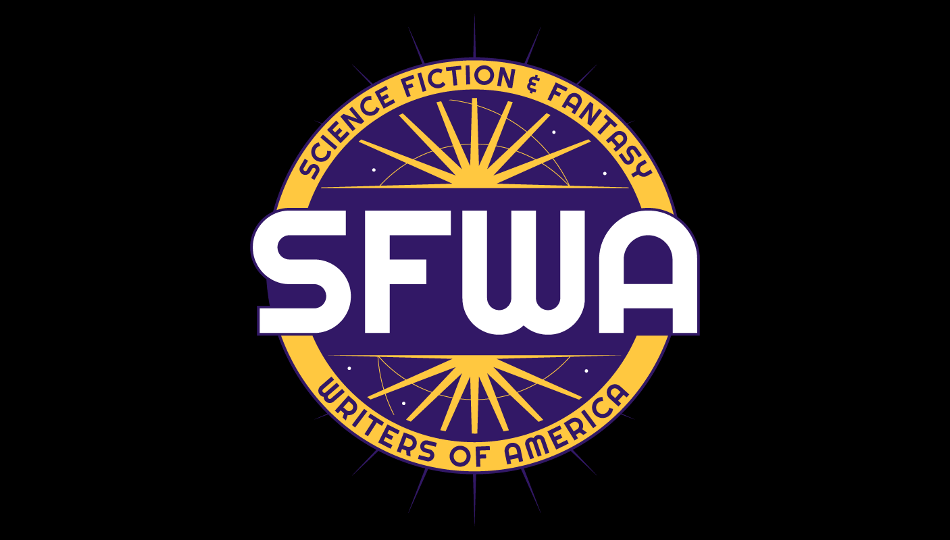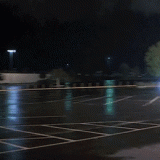Last week, we talked about paranormal romance and the ways in which it uses longstanding cultural archetypes (vampires, werewolves, etc.) to explore power, sexuality, and possibly even deeper existential themes. But speculative fiction is composed of both fantasy and science fiction, and speculative romance is no different. So how does science fiction romance differ from its more fantastical cousin?
| What’s the difference | ||||
 |
 |
 |
 |
|
Perhaps the most important difference is not creative, but commercial: spaceships and aliens apparently move fewer books than do vampires and werewolves. Paranormal romance authors like Charlaine Harris and Stephenie Meyer
are household names. Why then are such great science fiction romance authors as Catherine Asaro
or Lois McMaster Bujold
relatively unknown outside of fairly specific fandoms?
I think the reason for this discrepancy stems from three inter-related factors: audience, archetypes, and accessibility.
Romance Readers and Science Fiction Reading Protocols
It stands to reason that if as many people read science fiction romance as read paranormal romance, the two sub-genres would have equal sales and be equally well-known. But there is a significant difference in the two audiences, which I believe stems from the archetypes each sub-genre relies on and their impact on accessibility.
 |
 |
 |
Paranormal romance appeals to three groups of readers: those who enjoy speculative fiction, those who enjoy romance, and non-readers who consume pop culture in other mediums. Popular television shows like Buffy the Vampire Slayer, The Vampire Diaries
, True Blood
, etc. are bringing the conventions of paranormal romance into the mainstream, and educating each of these three groups about the reading protocols necessary to enjoy the mashed-up genre.

), the often-derided, often-purple prose of romance is itself a convention, a code for communicating with the romance cognoscenti: lush words and phrases used to describe a character act as signals for the reader, allowing a fast contextualization of that character’s role in the story, which helps the reader to form expectations about them.
Speculative fiction – and the more magical sort typically featured in paranormal romance – has its own set of reading protocols, often centered around the world-building employed to make the fantastic accessible. As Samuel Delany points out in “About 5,750 Words” (a classic essay of SF criticism collected in The Jewel-Hinged Jaw: Notes on the Language of Science Fiction), the science fictional interpretation of such sentences as “The red sun is high, the blue low” demands a different imaginative and cognitive process. This process is learned, albeit often self-taught. And within science fiction, there remain gradations and variants of this interpretative process: fantasy and horror rely on a particular set of conventions which are different from those that apply to science fiction.
As paranormal romance gets increasingly mainstreamed, it is simultaneously educating the potential audience about both romance and fantasy. In a sense, it primes the pump from both the romance and paranormal ends: romance readers are gaining the imaginative vocabulary necessary to interpret fantasy, fantasy readers are gaining the reading protocols to enjoy romance, and non-readers are learning to consume both.
| Where’s the love? |
 |
 |
 |
But while recent years have seen popular science fiction programming (Lost, Doctor Who
, Battlestar Galactica
, Star Trek
, Marvel’s The Avengers
, etc.), these programs were never romance-oriented. Thus, even though science fiction programming has become popular enough to enter the mainstream, its action orientation fails to communicate the romance reading protocols necessary to enjoy science fiction romance. It might teach people how to consume science fiction, but it falls short of teaching them how to consume science fiction romance.
The reasons for this discrepancy are likely complex and varied, but I think at the heart of it they stem from the cultural legacy and resulting familiarity of the archetypes employed in paranormal romance. Science fiction – and science fiction romance – doesn’t (yet) have such a longstanding history.
The New Archetypes of Science Fiction Romance
Vampires, werewolves, witches, etc. have a significant legacy in Western culture, and are firmly entrenched in popular consciousness. Even the most culturally unaware understand the rules by which vampires operate (although Twilight’s sparkly vampires may erode this familiarity for the younger generations).
Vampires in one form or another span almost all cultures, and stories featuring them (and their psychosexual symbolism) date back thousands of years. The spaceships, aliens, psychic powers, and interstellar war featured in the works of Catherine Asaro, Heather Massey
, Jacqueline Lichtenberg
, Jayne Ann Krentz
, or Lois McMaster Bujold
have a much shorter history: as archetypes go, they’ve only been around for most of the past century (with the original incarnation of Amazing Stories a major factor in their popularization).
Most science fiction romance devices – in particular spaceships, the pilots/captains who fly them, and interstellar empires – trace a clear lineage to earlier action adventure fiction, which gives them a common heritage with much rather-anachronistic historical romance. While starships and intergalactic war are relatively new devices, the character devices they produce are strongly reminiscent of older traditions.

, which explicitly features an explorer (Nick Venture) and a pirate (Racquel Donovan). While the novel is set in the distant future, the fact that the hero and heroine have their adventures in space is almost incidental to the novel’s structure. If the bones of the story were pulled back to the seventeenth century, the story’s underlying structure would still work. Stories like Jayne Ann Krentz’s Lost Colony trilogy
, Diane Dooley’s Mako’s Bounty
, or Kris DeLake’s Assassins in Love
all bring their romance into adventure stories with elements reminiscent of H. Rider Haggard
, Edgar Rice Burroughs
, or their adventurous contemporaries.
A similar observation can be made about either Asaro’s Skolian Empire Saga, or Bujold’s Lois McMaster Bujold
: their plot structures and character archetypes draw heavily from historical romance (Jo Walton has drawn clear parallels between Bujold’s Vorkosigan romances and Georgette Heyer’s
Regency romances) and action adventure, although they notably use science fictional conceits to explore or highlight themes otherwise inaccessible in a historical setting.
It is this use of science fictional devices to explore power beyond the sexual dimension which sets Asaro and Bujold’s work apart: both use technology (medical technology in particular) to explore the boundaries of personal agency, and its social, political, and psychological implications. This is a powerful technique with roots firmly in science fiction, but while such a science fiction laden approach may appeal to readers experienced and comfortable with science fiction reading protocols, it may be off-putting to those less comfortable in that genre. Both Asaro and Bujold moderate this risk through their narrow focus on the personal implications of their science fictional devices, which invariably tie back into their character development and perforce their character’s relationships. Asaro in particular, by incorporating psychic powers into her Skolian Saga comes closest to the intensely personal, powerfully emotional, and easily accessible devices so commonly found in paranormal romance.
As archetypes go, psychic powers are the area where science fiction romance most closely mirrors its paranormal cousins: the themes explored by works like Nalini Singh’s Psy-Changeling series, Jacqueline Lichtenberg’s far earlier Sime-Gen stories
, or Sharon Lynn Fisher’s Ghost Planet
all focus on the power dynamics between emotions and actions among individuals and social groups. Metaphorically, these themes are not dissimilar to those explored by the use of vampires, werewolves, ghosts, and shapeshifters.
I have a hypothesis – though I lack the sales data to back my hypothesis up – that those science fiction romances that are modeled more closely on their supernatural cousins may be more popular than their more hard science fiction/adventure-oriented siblings. If that is the case (and that’s a big IF), then I suspect it stems from the relative accessibility of the archetypes and devices used.
The Accessibility Challenge of Science Fiction Romance
Some might argue (and I’ve done so myself, here) that through the increasing popularity of science fiction in pop culture, the devices and archetypes of science fiction are gradually being made universal and universally accessible. But while many of the fictional devices traditional for science fiction (“warp drives”, “laser guns / plasma cannons”, “cryosleep”) can now be easily understood even by non-science fiction readers, they are not yet so universal as to grant science fiction authors an assumption of familiarity.

science fictional portmanteau “biomech”, the term itself is meaningless without the social and political context she establishes in Primary Inversion
. The science behind Asaro’s “inversion” process – through which the starships featured in her Skolian Empire Saga
can travel faster-than-light (technically, through which they can get around the restrictions on speed imposed by special relativity) – while unimportant through the reading protocols of romance, remains a core component of the novel’s science fictional conceits. Yet the same elements that are intrinsic to the novel’s reading as science fiction may represent a turn-off for readers unfamiliar with science fictional reading protocols.
Lois McMaster Bujold adopts a very different approach in her Vorkosigan Saga
, which itself is far more complex than Asaro’s work. While the saga’s first novel (chronologically and in publication order), Shards of Honor
combines in equal parts elements of a traditional romance structure with those of military science fiction, most of the other early books focus on the development of science fictional conceits before introducing more overtly romantic dimensions.
This almost-sequential approach enables Bujold to establish the technology and social mores of her fictional future, which in turn are used to strongly affect the development of her primary hero: Miles Vorkosigan. As an exploration of power, Bujold builds a rich and complex power dynamic early on, and explores in equal fashion the political, social, cultural, and gendered dimensions of that dynamic.
A romance reader who approached many of the earlier Vorkosigan works, or who began reading one but never finished, could be forgiven for not realizing that the series as a whole can be considered science fiction romance: the way the novels are constructed makes them seem heavily science fictional in nature, requiring science fiction protocols to interpret the story long before any romance protocols are employed. Yet taken as a whole, the Vorkosigan Saga can be interpreted as a science fiction romance, exploring the relations and power dynamics among several generations of the Vorkosigan/Naismith family.
Both Asaro and Bujold write science fiction romance in the purest sense. While many of their stories’ militaristic devices hearken back to action adventure traditions, they cannot be divorced from either their science fiction or romance components. However, by developing the romance elements in parallel to their science fiction counterparts, Asaro has gained more acknowledgment amongst the romance community: she has won the Sapphire Award twice, the RT Book Club Reviewer’s Choice Award for Best Science Fiction Novel three times, the Affaire de Coeur Award for Best Science Fiction twice, and been nominated for a RITA award at least once. From a science fiction standpoint, her work has been nominated for the Hugo three times, the Nebula five times, and has won a Nebula twice.
Bujold, by contrast, developed her science fictional and romance elements in sequence rather than in parallel, and many of the books in the Vorkosigan Saga (taken individually) lack significant romance of any kind. As a result, she has received far more recognition from the science fiction community: as far as I could find, her Vorkosigan books
have
not been nominated for any romance awards only won a handful of romance awards over the years (A Civil Campaign won first place in the Sapphire Awards along with a PEARL Award, while Diplomatic Immunity
was nominated for a PEARL), yet she has won five Hugos, three Nebulas, and three Locus awards (with six other Hugo nominations, and five other Nebula nominations).
All of this suggests that the necessity of establishing science fictional conceits, and satisfying the world-building demands of science fiction readers, makes science fiction romance less accessible to a romance-derived audience than its supernatural cousin. In essence, science fiction has yet to become as “mainstream” as the supernatural found in paranormal romance.
Yet there is a third approach, a way around the accessibility challenges inherent in constructing a science fiction romance perhaps best exemplified by J.D. Robb’s In Death series
. As I discussed last week, much of the paranormal romance genre adopts noir-inspired conventions by way of romantic suspense and thus obviates the need for the world-building used in secondary-world fantasy. Despite already using long-established archetypes and symbols, this structure helps make paranormal romance even more accessible by establishing well-grounded plot and character expectations.
While both the action/adventure so often found in science fiction romance and the noir/suspense seen in paranormal romance have long traditions, the action/adventure tradition is far more varied and diffuse. Noir and suspense have developed a far more stable and recognizable set of conventions, which are in turn used and repeated across literature, film, and television. As a result, the reading protocols of noir/suspense are more solidly developed, which leads to a larger potential audience that I believe science fiction romance has left largely untapped. J.D. Robb’s (aka Nora Robert’s) bestselling and award-winning In Death books
capitalize on this noir/suspense tradition, rather than on the action/adventure found so often in science fiction romance.
Ostensibly, the books are constructed as a classic police procedural mystery. Were it not for their futuristic setting and the technology used by the characters, the stories would not be out of place in any mystery or romantic suspense section. The heroine, Eve Dallas, is a classic police procedural detective, with a clear lineage traceable back to Sara Paretsky’s V.I. Warshawski (the same V.I. Warshawski who was so critical in Laurell K. Hamilton’s
creation of Anita Blake).
As far as accessibility goes, the science fictional devices at work in the In Death books take a backseat to the suspense/mystery devices. As a result, the stories are perhaps amongst the most accessible science fiction, in that they use archetypes and conventions familiar to readers/viewers of mystery, suspense, and the long-standing and popular noir tradition. In essence, Robb builds on the already-mainstreamed reading protocols of noir and mystery, adding a light sprinkle of science fiction for a little flavor.
Considering the porous borders between so much science fiction and noir, and romance’s own long-standing love affair with mystery and suspense, it is surprising that more science fiction romance authors haven’t adopted this approach. It is one that has worked well for paranormal romance (as I wrote about last week). And if, as I wrote last month, there is nothing inimical about noir and science fiction, one would think that the same archetypes and conventions could be more readily adopted by science fiction romance.
Paranormal romance has clearly benefited from a ménage of genres, so why not science fiction romance?
Coming Up Next Week…
Next week, I’ll be wrapping up the Crossroads romance series by looking at how speculative fiction incorporates elements of romance, taking a specific look at the works of Mary Robinette Kowal, Anne Bishop, M.K. Hobson, and Saladin Ahmed. ‘Til then, what are some of your favorite science fiction romances?















Recent Comments